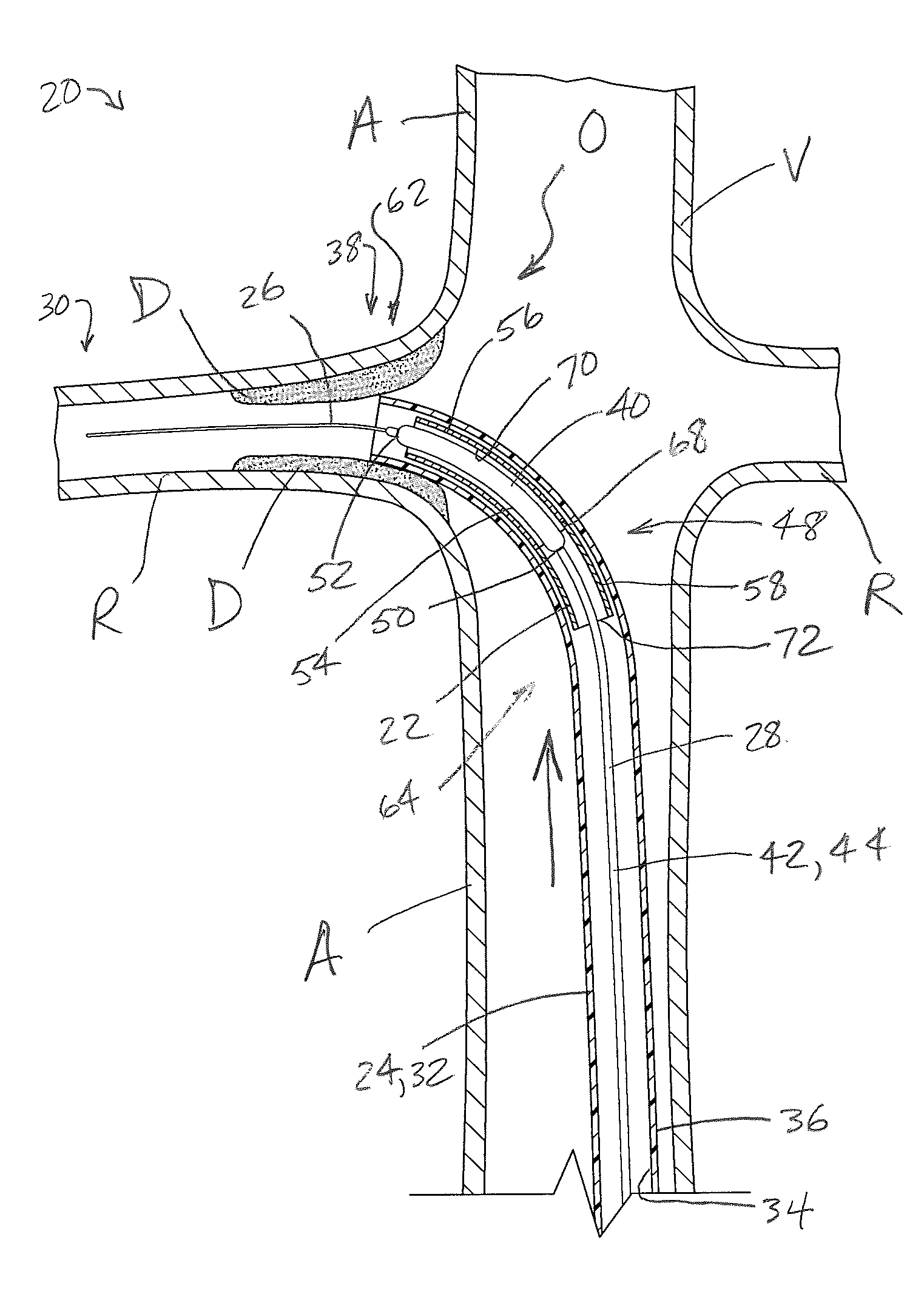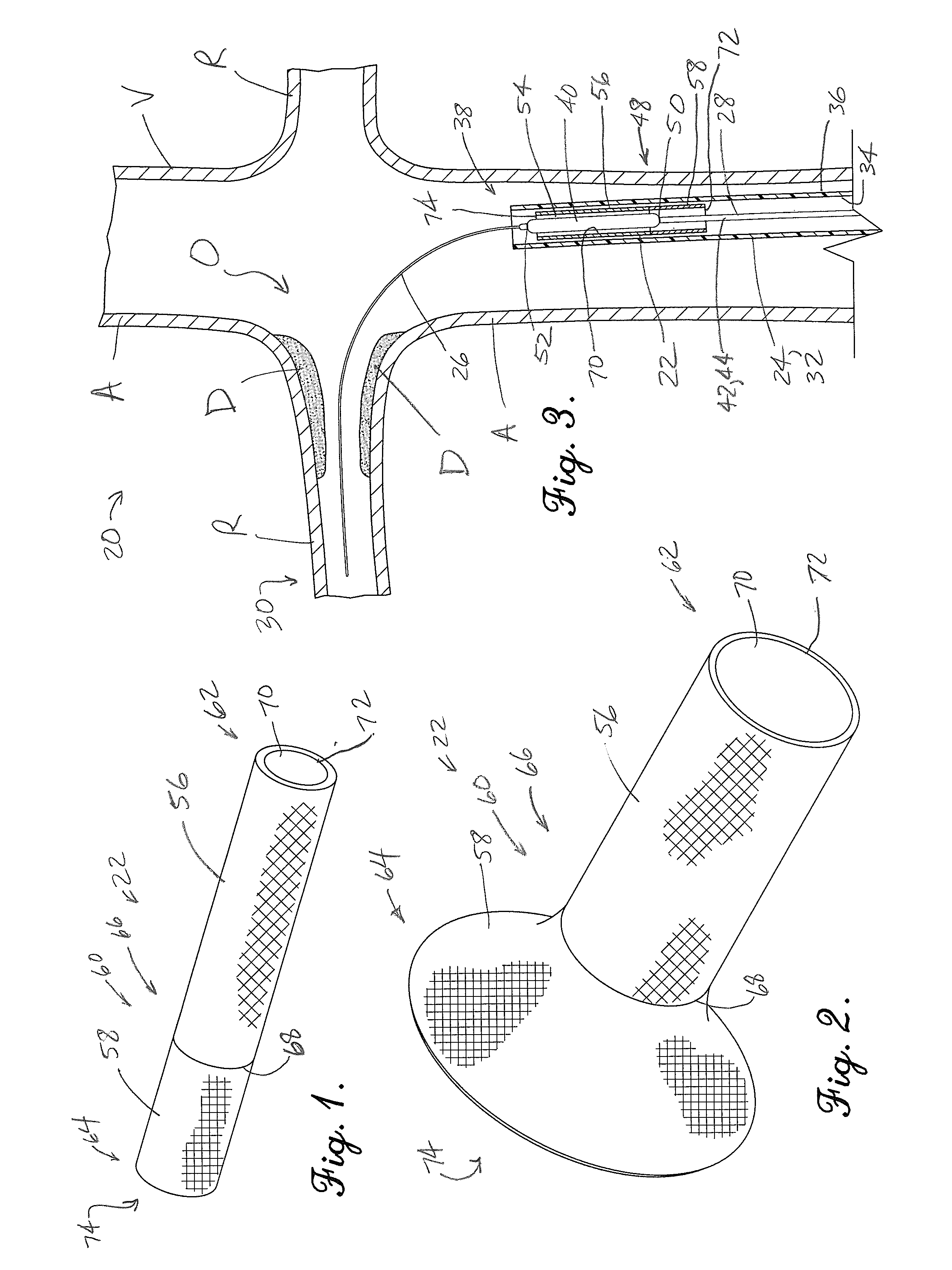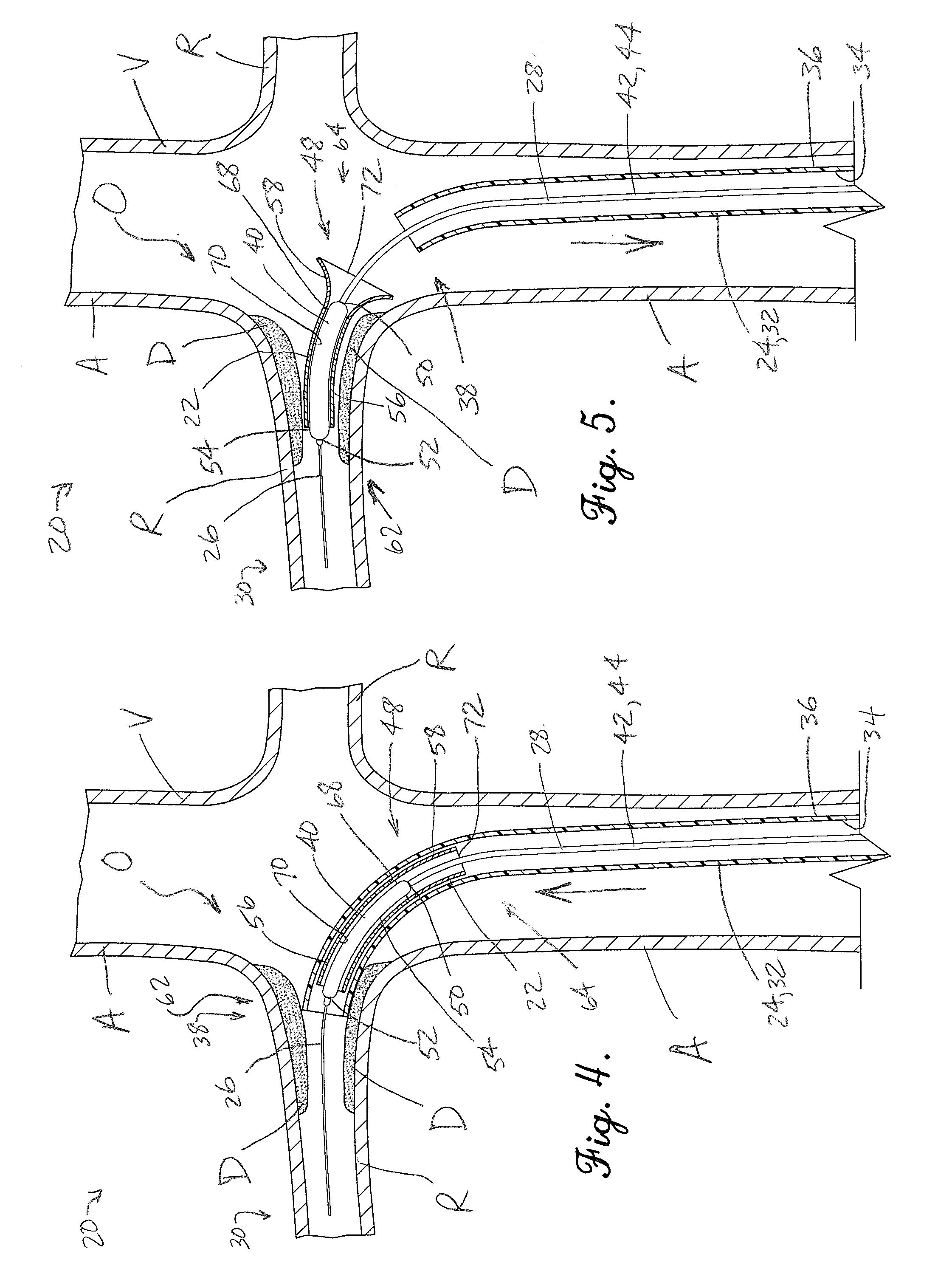Ostial stent
a stent and ostial technology, applied in the field of stents, can solve the problems of difficult precise positioning of balloon-expandable stents, poor stent sensitivity, and various undesirable limitations of prior art stents, and achieve the effects of improving vessel patency in the ostial region, improving ostial region stent sensitivity, and simplifying and accurate placemen
- Summary
- Abstract
- Description
- Claims
- Application Information
AI Technical Summary
Benefits of technology
Problems solved by technology
Method used
Image
Examples
Embodiment Construction
[0020]Turning initially to FIGS. 1, 2, and 3, an ostial stent system 20 is constructed in accordance with a preferred embodiment of the present invention. The ostial stent system 20 is preferably used to implant an ostial stent 22 in an ostial region O of a patient's vascular system and thereby improve vessel patency in the ostial region. As used herein, the term “ostial region” refers to a junction between two vessels. One such junction includes an ostium, which is normally the mouth of the smaller of the two vessels.
[0021]As will be discussed further, it has been found that the illustrated system 20 provides for simple and accurate stent implantation in the ostial region. More particularly, the system 20 restricts the operator from advancing the stent too far into the ostium. At the same time, the system 20 signals the operator that the stent has been sufficiently advanced into the ostium. The ostial stent system 20 broadly includes the ostial stent 22, a guide catheter 24, a guid...
PUM
 Login to View More
Login to View More Abstract
Description
Claims
Application Information
 Login to View More
Login to View More - R&D
- Intellectual Property
- Life Sciences
- Materials
- Tech Scout
- Unparalleled Data Quality
- Higher Quality Content
- 60% Fewer Hallucinations
Browse by: Latest US Patents, China's latest patents, Technical Efficacy Thesaurus, Application Domain, Technology Topic, Popular Technical Reports.
© 2025 PatSnap. All rights reserved.Legal|Privacy policy|Modern Slavery Act Transparency Statement|Sitemap|About US| Contact US: help@patsnap.com



